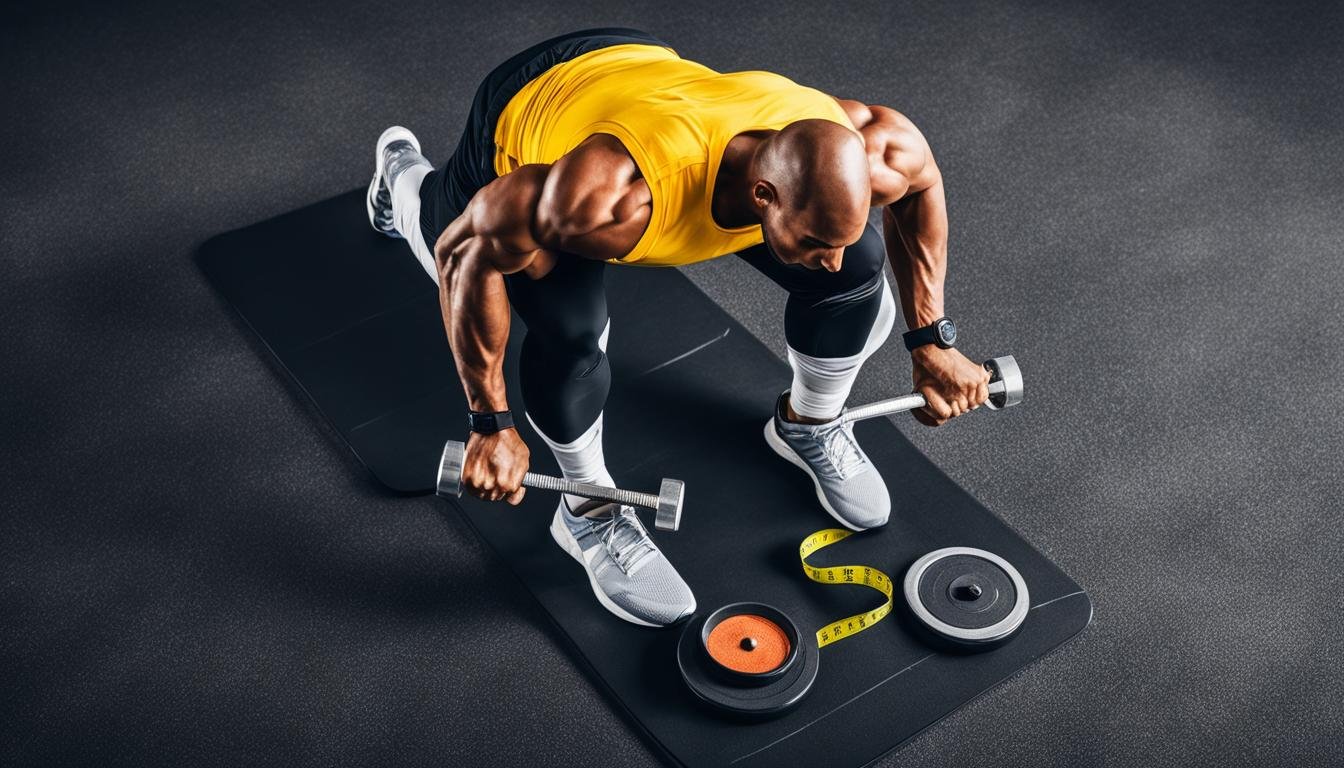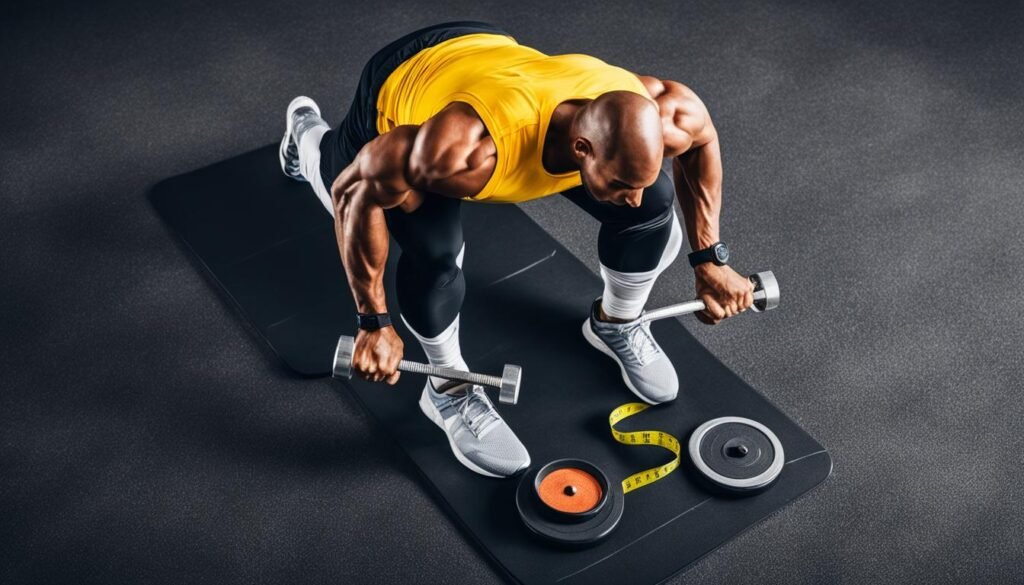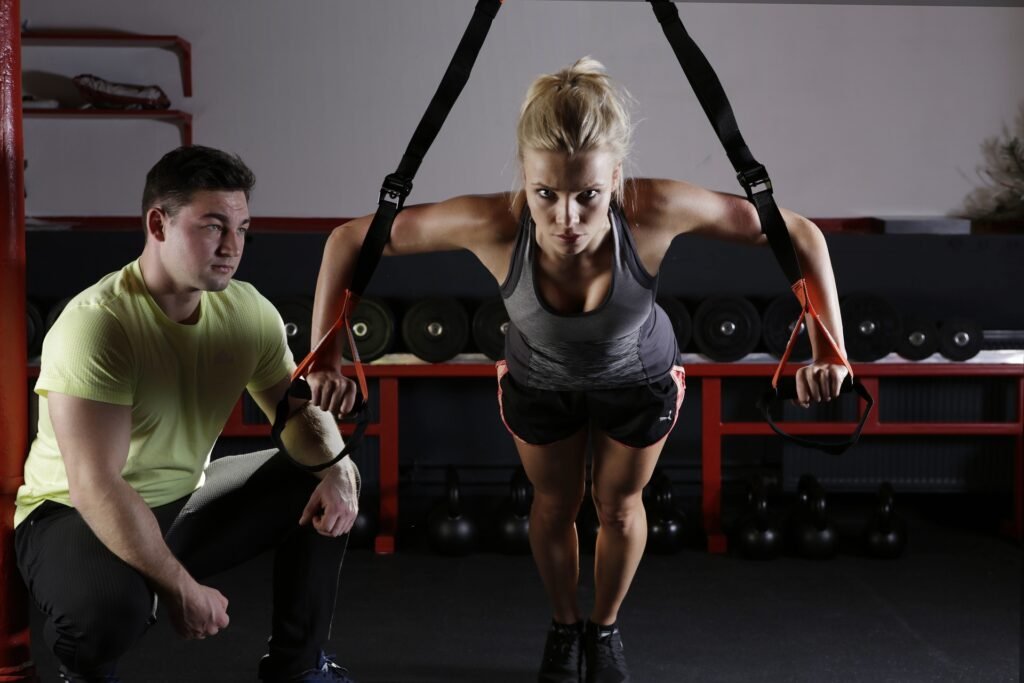Get our FREE E-Book HERE - 120 TIPS for Losing Weight & Bonus Tips for Postpartum Weight Loss & Dad’s Postpartum Experience
Intermittent Fasting and Working Out: 10 Best Tips

Intermittent fasting (IF) has become a popular practice when combined with exercise. Many people wonder about the benefits and drawbacks of working out while fasting and the best strategies to follow. In this article, we will explore the key considerations for intermittent fasting and working out, helping you make informed decisions about incorporating exercise into your fasting routine.

Key Takeaways:
- Exercising while fasting can increase fat burning but may lead to decreased energy levels.
- Timing your workouts during intermittent fasting can vary based on personal preferences and goals.
- Consider factors such as meal timing, post-workout nutrition, and hydration for effective workouts while fasting.
- Ensure you exercise safely by eating a meal close to workouts and paying attention to your body’s signals.
- Consult with a healthcare provider before starting any fasting or exercise program.
Pros and Cons of Exercising While Fasting
Exercising while fasting can have both benefits and drawbacks. Let’s take a closer look at the pros and cons.
Benefits of Exercising While Fasting
- Increased Fat Burning: When you exercise in a fasted state, your body depletes stored carbohydrates and taps into fat stores for energy, leading to increased fat burning.
- Improved Insulin Sensitivity: Exercising while fasting can improve insulin sensitivity, which means your body can use insulin more effectively to manage blood sugar levels.
Drawbacks of Exercising While Fasting
- Muscle Breakdown: Exercising while fasting can potentially lead to muscle breakdown as your body may use muscle protein for energy.
- Decreased Energy Levels: Working out without fuel from food can result in decreased energy levels, making it harder to perform at your best.
- Decreased Workout Performance: Fasting may impact your workout performance, including strength, endurance, and overall output.
- Metabolic Impact: Long-term fasting coupled with exercise can slow down metabolism and potentially affect muscle mass.
To fully understand the benefits and drawbacks of exercising while fasting, it’s important to consider individual factors such as fitness goals, overall health, and personal preferences. Additionally, consulting with a healthcare provider can provide valuable insights tailored to your specific needs.
Now that we’ve explored the pros and cons, let’s delve into the best practices for timing your workouts during intermittent fasting in Section 3.
Also Read: 90 Day Intermittent Fasting Results Unveiled
Intermittent Fasting and Working Out: Timing Schedule

When to exercise during intermittent fasting can greatly impact the effectiveness of your workouts. One popular intermittent fasting protocol is the 16:8 method, where you fast for 16 hours and have an 8-hour feeding window. However, finding the best timing for your workouts depends on your individual preferences and goals.
Some experts suggest working out before the feeding window if you perform well on an empty stomach. This is known as fasted training and has been shown to increase fat burning during workouts. It may also help improve insulin sensitivity, allowing your body to use energy more efficiently. However, it’s important to note that fasted training may be more suitable for low to moderate-intensity workouts.
Click here for more information on Intermittent Fasting
On the other hand, some individuals prefer to work out during the feeding window to take advantage of the post-workout nutrition. This allows you to fuel your muscles with carbohydrates and protein, which can enhance recovery and muscle growth. If you’re following the 16:8 method, you can plan your workouts to coincide with your feeding window for optimal nutrient timing.
Another option is to exercise after the feeding window if you prefer to exercise after fueling your body. This can provide you with the energy needed to perform high-intensity workouts. Additionally, exercising after the feeding window may help replenish glycogen stores in your muscles, which can improve workout performance.
Ultimately, the timing of your workouts should consider factors like performance, recovery, and individual preferences. It’s essential to listen to your body and experiment with different timings to find what works best for you.
If you’re skeptical about exercising while fasting, I suggest giving it a try and seeing how your body reacts. Remember, everyone is different, and what works for one person may not work for another. It’s always a good idea to consult with a healthcare professional before starting any new exercise or nutrition plan.
It’s worth noting that there are limited scientific studies specifically investigating the timing of workouts during intermittent fasting. However, a study published in the journal Nutrients found that fasted workouts may increase fat oxidation and improve insulin sensitivity in overweight men. Another study published in the Medicine and Science in Sports and Exercise journal suggested that post-exercise nutrient timing might be more critical for muscle protein synthesis than the timing of pre-exercise nutrients.
Tips for Effective Workouts While Fasting
To make your workouts effective while fasting, there are some tips you can follow.
- Consider the type of workout based on your macros. Different workouts may have varying macronutrient requirements. For strength workouts, you may need more carbohydrates for optimal performance, while cardio or HIIT workouts can be done on lower carb days. It’s important to fuel your body appropriately for the type of workout you plan to do.
- Pay attention to meal timing. If you’re working out during the feeding window of your intermittent fasting schedule, try to have a meal close to your workout time. This will provide your body with the necessary fuel to power through your workout while fasting. Aim to eat a balanced meal that includes carbohydrates, protein, and healthy fats.
- Prioritize post-workout nutrition, especially after strength training. Consuming carbohydrates and protein within 30 minutes of your workout can aid in muscle regeneration and recovery. This can be achieved through a post-workout meal or by consuming a protein shake or bar. Aim for a combination of fast-absorbing carbohydrates and high-quality protein to support muscle repair.
- Stay hydrated and keep your electrolytes up. It’s crucial to stay hydrated during fasting and exercise to maintain optimal performance. Water, coconut water, and electrolyte drinks can help replenish electrolytes and maintain fluid balance in your body. Make sure to drink enough fluids before, during, and after your workouts to prevent dehydration.
By following these tips, you can maximize the effectiveness of your workouts while fasting and support your overall fitness goals.

Scientific Studies:
A scientific study published in the Journal of Nutrition found that individuals who exercised while fasting experienced increased fat oxidation and improved insulin sensitivity compared to those who exercised after a meal (source).
Another study published in the European Journal of Applied Physiology showed that exercising in a fasted state can lead to enhanced metabolic adaptations, including increased fat utilization and improved endurance capacity (source).
Safety Tips for Exercising While Fasting
Exercising while fasting can be a great way to boost your fitness routine, but it’s important to prioritize your safety. By following these tips, you can exercise safely and effectively during intermittent fasting:
- Eat a meal close to your workout: Before engaging in a moderate- to high-intensity workout, ensure you have enough glycogen stores for energy by consuming a balanced meal. This will provide the necessary fuel to power through your exercise session.
- Stay hydrated: Drink plenty of water throughout the day, especially during your fasting period and before, during, and after your workout. Proper hydration supports optimal performance and helps prevent dehydration.
- Replenish electrolytes: Consider incorporating coconut water or other electrolyte-rich drinks to maintain proper electrolyte balance. These beverages can support hydration and help replace any electrolytes lost during exercise.
- Moderate intensity and duration: Keep the intensity and duration of your workouts fairly low, especially if you’re new to exercising while fasting. This can help prevent dizziness, lightheadedness, and fatigue during your workout.
- Choose suitable exercises: Depending on the length of your fasting period, opt for low-intensity exercises such as walking, restorative yoga, or gentle Pilates. These activities are less demanding on the body and can be performed comfortably during longer fasting periods.
- Listen to your body: Pay attention to any signs of weakness, low blood sugar, or unusual discomfort during your workout. If you experience any negative symptoms, it’s important to stop and rest or consult a healthcare provider.
Remember, the safety tips provided here are general guidelines. It’s crucial to consult with a healthcare provider before starting any nutrition or exercise program, especially if you have any underlying health conditions or concerns.
Conclusion
Combining working out during intermittent fasting can be a beneficial approach to achieving your health and fitness goals. Research has shown that exercising while fasting can increase fat burning and improve insulin sensitivity, which can support weight loss and overall metabolic health. However, it’s important to be aware of the potential drawbacks and listen to your body to ensure a safe and effective approach.
The timing of your workouts during intermittent fasting can vary depending on your personal preferences and goals. Some people may find that intermittent fasting and working out in the morning before they break their fast, works best for them. Others may prefer to exercise during their feeding window to ensure they have enough energy for their workouts. Ultimately, it’s about finding what works best for you.
It’s crucial to follow safety tips to avoid any negative effects while exercising while fasting. Make sure to eat a meal close to your workouts to provide your body with the necessary fuel. Staying hydrated and replenishing electrolytes is also important, especially during fasting and exercise. Always listen to your body – if you feel weak or experience low blood sugar symptoms, it’s essential to take a break and consult with a healthcare provider if needed.
Overall, intermittent fasting and exercise can be an effective combination for some individuals to support their health and fitness goals. However, it’s important to note that this approach may not be suitable or comfortable for everyone. Each person’s body and needs are unique, so it’s always recommended to consult with a healthcare provider to ensure a safe and personalized approach to intermittent fasting and exercise.
FAQ
Can I exercise while doing intermittent fasting?
Yes, you can exercise while doing intermittent fasting. However, it’s important to understand the pros and cons and listen to your body.
What are the benefits of exercising while fasting?
Exercising while fasting can lead to increased fat burning and improved insulin sensitivity.
Are there any drawbacks to exercising while fasting?
Yes, exercising while fasting can lead to muscle breakdown, decreased energy levels, and decreased workout performance.
When is the best time to exercise during intermittent fasting?
The best time to exercise during intermittent fasting depends on individual preferences and goals. It can be before, during, or after the feeding window.
Do you have any tips for effective workouts while fasting?
Yes, some tips for effective workouts while fasting include considering the type of workout based on your macros, timing meals appropriately, prioritizing post-workout nutrition, and staying hydrated.
How can I exercise safely while fasting?
To exercise safely while fasting, make sure to eat a meal close to a moderate- to high-intensity workout, stay hydrated, and keep the intensity and duration of your workouts fairly low.
Should I consult with a healthcare provider before exercising while fasting?
Yes, it’s always a good idea to consult with a healthcare provider before starting any nutrition or exercise program, including exercising while fasting.
Source Links
- https://www.healthline.com/health/how-to-exercise-safely-intermittent-fasting
- https://www.atkins.com/how-it-works/library/articles/6-things-to-know-about-intermittent-fasting-and-working-out
- https://www.hindawi.com/journals/jnme/2016/1984198/
- https://www.semanticscholar.org/paper/Effect-of-training-in-the-fasted-state-on-metabolic-Bock-Derave/01da75ad5ab25da8c683a70a3fd741e9bd8a9cff




